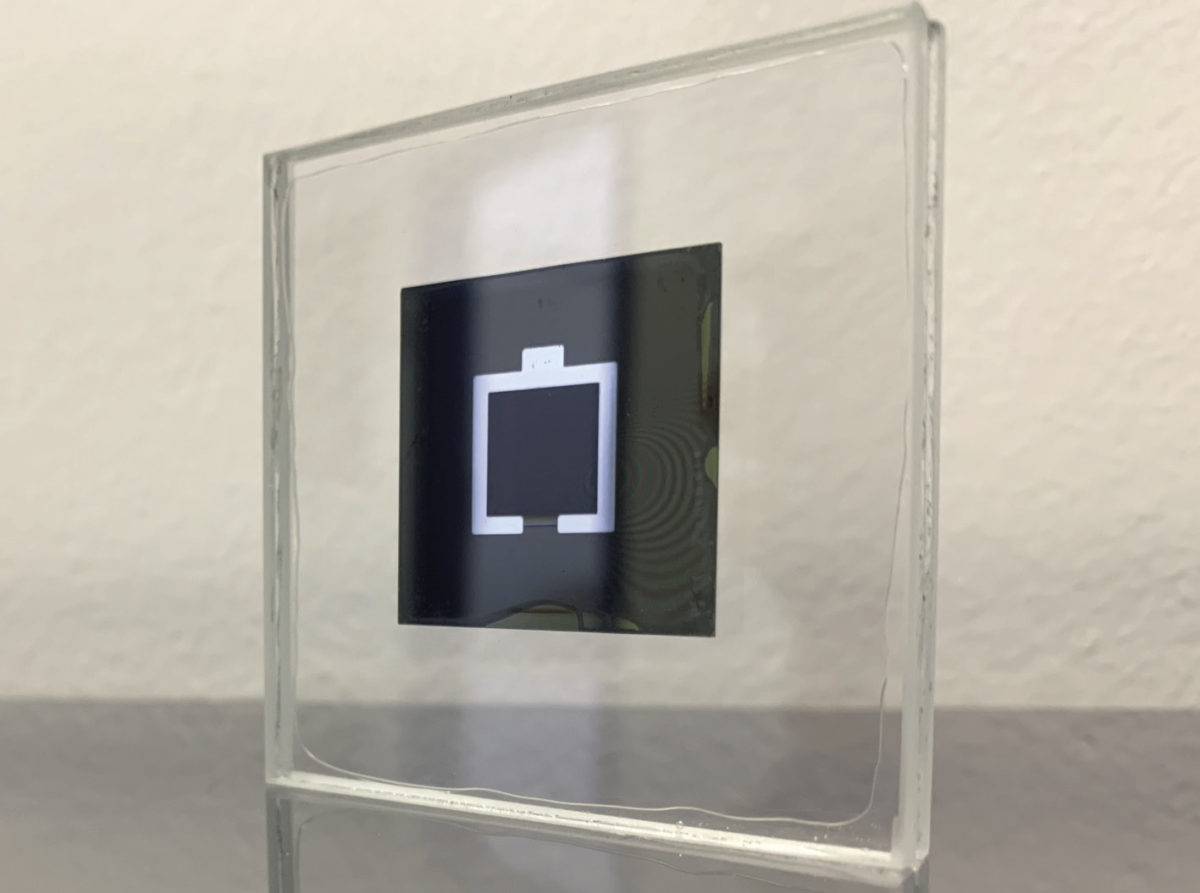The average efficiency of commercial silicon modules has improved in recent years, in the range of 0.3–0.4 percentage points per year. These efficiency gains have taken place in a very competitive environment, since module prices have fallen by more than 70% in the past six years alone.
However, since mainstream technologies, such as p-type passivated emitter and rear cell (PERC), are slowly reaching their physical limits of conversion efficiency, the industry is increasingly focused both on optimizing new techniques and innovations, and on applying new PV materials and technologies such as perovskites.
The conversion efficiency of perovskite solar cells has continuously increased over the past 10 years. Considering that perovskite materials for solar technology are in the early stages of development, the efficiency improvements from 3.8% in 2009 to about 23% in 2018 are a staggering achievement. This efficiency learning curve is far steeper compared with any other emerging PV technology. Although the efficiencies refer to lab efficiencies and not to mass-production commercial cells, they still indicate that perovskites can have a huge impact on the solar industry.
Perovskite production
Perovskite solar cell (PSC) technology shares many similarities with other so-called third-generation solar cells. Particularly in terms of cell design and processes, it is very close to dye-sensitized solar cells (DSSC) and organic solar cells (OSC, or OPV cells). However, the rapid progress of PSCs can only partially be explained by that similarity, because each of the mentioned technologies is being developed independently.
There is more than one process to produce PSC modules. In its simplest method, PSCs can be manufactured by roll-to-roll coating, including well-known technologies such as slot die, spray coating, and ink-jet printing, or through evaporation. This process essentially eliminates the need for wafer manufacturing and other related processes used in crystalline silicon (c-Si) cells.
Another advantage of PSC manufacturing is that perovskites can be used in both single-junction and tandem-junction technologies. The single-junction technology is the simplest form, relying on a single layer of perovskite material, which supplies the photoelectric effect. In that form, the PSC can reach conversion efficiencies of up to 23%. To increase the efficiency to 27% and beyond, many research institutes and startups are now exploring the use of tandem cells, which are a type of multijunction cell combining the PSC as an additional absorption layer on standard c-Si cells, or on thin films such as CIGS or CdTe modules.
Advantages and barriers
The advantages of perovskite technology are straightforward. The perovskite materials are relatively cheap compared to crystalline silicon, especially monocrystalline p-type and n-type, since this technology does not require the use of polysilicon, silver paste, and other materials used in standard c-Si modules. It can achieve higher efficiencies because of long carrier diffusion length within the material, and there is a possibility to choose the color (absorption band) of the panel, because of the widely tunable bandgap of the material. The PSCs can operate with single-junction and multijunction technologies (with c-Si and thin film), and are suitable in different applications and segments, such as building integrated photovoltaics (BIPV), as well as utility-scale solar plants.
However, PSC technology still requires additional improvements in several important areas, such as strong degradation in the presence of moisture, oxygen, UV light, and high temperatures. The toxicity of lead and tin also needs to be addressed, as those materials are used during manufacturing, and can become apparent during operation and at end of life.
Another important area of needed improvement is cell size. The mentioned record efficiencies of 18–23% that are constantly advertised in the news have been achieved with very small cells, while cells that have a size compatible with actual commercial use still exhibit much lower efficiencies of 10–12%.
In sum, the technology still needs to demonstrate that it is ready to fulfill all requirements and move from research cell tests to commercial module production.
Applications, forecasts
PSCs potentially offer more advantages than c-Si cells in BIPV. PSC cells can be colored or come in different sizes, and the resultant modules can be semi-transparent, as well as flexible and curved. Given this, PSCs seem to be a more suitable technology for BIPV applications than c-Si cells, which cannot or can only partially replicate those factors. Since many BIPV projects are installed in prestigious buildings, price sensitivity remains lower than in standard PV installations and therefore they are more favorable to the early adoption of PSCs. The application and competitiveness of PSC technologies in other rooftop or ground applications still requires further development of materials, targeting much higher efficiencies in tandem or multijunction structures, and a significant production cost reduction to reach commercial applications. In the recent “Perovskite Solar Cells Report,” published in January 2020, IHS Markit forecasts that the industry will be ready for the mass production and commercialization of perovskite cells (in single- and multijunction architectures) within the next three to five years.
To date, there are only a few pilot lines producing PSCs and only a handful of demonstration installations worldwide. The production capacity of perovskite modules is limited to pilots and demonstration projects, and IHS Markit estimates that the total installed capacity does not surpass 20–30 MW globally. However, numerous equipment manufacturers and research institutes are investing in developing and advancing the technology to increase conversion efficiencies and improve current challenges with the instability and degradation of perovskite cells. Some companies have already publicly announced that they will start commercial production in 2020. To illustrate this, Saule Technologies, for example, is now ramping up its production lines in Poland. Oxford PV is also working with equipment supplier Meyer Burger to transfer its tandem cell technology to launch commercial production this year.
The views and opinions expressed in this article are the author’s own, and do not necessarily reflect those held by pv magazine.
This content is protected by copyright and may not be reused. If you want to cooperate with us and would like to reuse some of our content, please contact: editors@pv-magazine.com.



2 comments
By submitting this form you agree to pv magazine using your data for the purposes of publishing your comment.
Your personal data will only be disclosed or otherwise transmitted to third parties for the purposes of spam filtering or if this is necessary for technical maintenance of the website. Any other transfer to third parties will not take place unless this is justified on the basis of applicable data protection regulations or if pv magazine is legally obliged to do so.
You may revoke this consent at any time with effect for the future, in which case your personal data will be deleted immediately. Otherwise, your data will be deleted if pv magazine has processed your request or the purpose of data storage is fulfilled.
Further information on data privacy can be found in our Data Protection Policy.